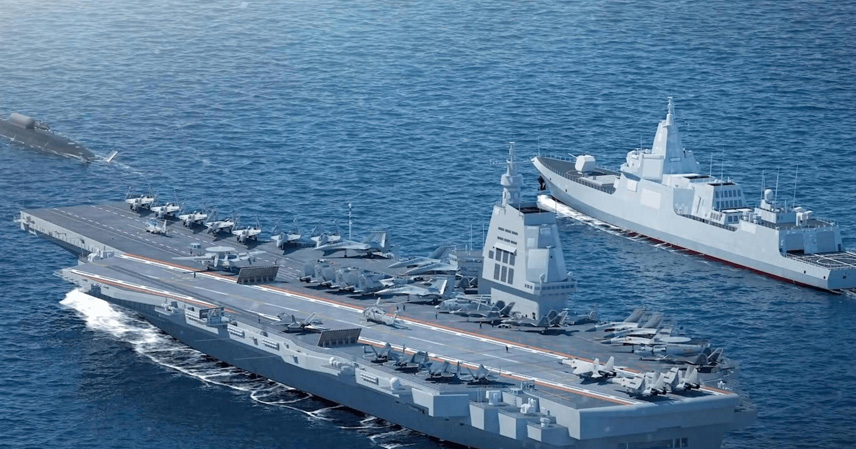On September 12, news broke that set the global military community abuzz: China’s Fujian aircraft carrier officially sailed south, carrying a complete combat system of 8 manned carrier-based aircraft types and 3 unmanned carrier-based aircraft types.
This configuration stunned military experts worldwide. Even the U.S. Navy’s latest Ford-class carriers lack such a comprehensive unmanned carrier-based aircraft system. Japan’s Ministry of Defense immediately dispatched warships to track Fujian.
Why did Fujian choose this exact moment to head south? And what secrets lie behind this configuration that even the U.S. Navy envies?
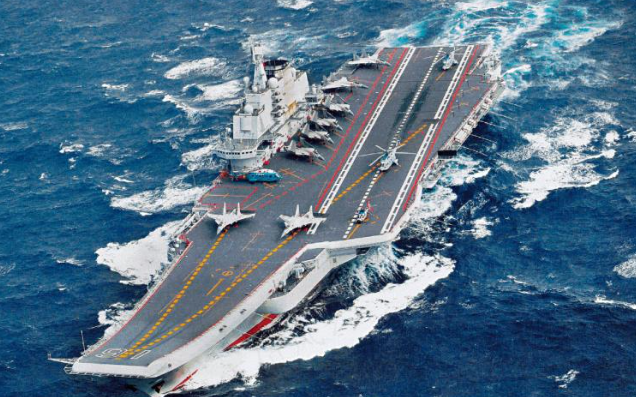
The “8+3” Configuration: Fujian’s Hidden Black Technology
The 8 manned carrier-based aircraft include the J-35 stealth fighter, the J-15T catapult-launched fighter, the J-15DT electronic warfare aircraft, the KJ-600 early-warning aircraft, and the Z-20F anti-submarine helicopter.
The shock lies not in the number of aircraft, but in their systematic integration.
Take electromagnetic catapult technology for example. It’s like fitting the aircraft with a super slingshot, far more powerful than traditional steam catapults.
This means aircraft can take off fully fueled and fully armed, directly doubling their combat radius. Fujian’s daily maximum sortie rate exceeds 300 sorties, placing it at the world’s leading level.
But the real killer advantage lies in the 3 unmanned aircraft types:
- Stealth strike-reconnaissance UAV with folding wings and flying-wing layout—able to penetrate enemy air defenses like an invisible assassin.
- Unmanned air superiority fighter, tailless with lambda wings—possibly capable of supersonic cruise, a level beyond ordinary UAVs.
- Unmanned helicopter, performing electronic reconnaissance, relay communications, and maritime search.
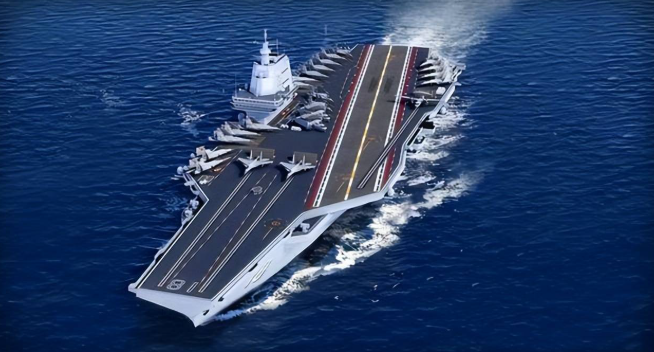
This multi-type integrated combat system gives Fujian the ability to respond to threats across both sea and air.
Meanwhile, the U.S. lags behind. Since the cancellation of the X-47B project, its carrier-based UAV development has stagnated, leaving only the MQ-25 refueling drone.
By contrast, China’s 8+3 configuration is not only about numbers—it represents a fully functional combat system, showing China has gone beyond catching up and started leading in certain fields.
Why Now? The Strategic Timing Behind Fujian’s Southward Move
Fujian’s timing is no coincidence. Its move south came just 24 hours after high-level China-U.S. talks.
Foreign Minister Wang Yi warned the U.S. to “act with caution,” while Defense Minister Dong Jun stressed that “containment of China is absolutely impossible.”
Almost immediately, Fujian set sail—sending a clear signal: China talks, but it also acts.
From a service schedule perspective, Fujian has completed sea trials, making this deployment likely the final step before formal commissioning.
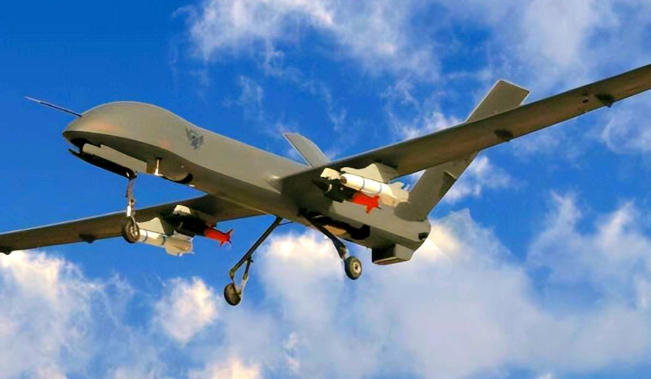
Based on past practice with Shandong, which entered the South China Sea one month before joining active service, Fujian may well hold its commissioning ceremony around National Day.
Strategically, its destination is almost certainly Sanya Naval Base, a key South China Sea facility capable of hosting multiple carriers.
Stationing Fujian there strengthens China’s control over the South China Sea, Bashi Channel, and Malacca Strait, while also increasing pressure on Taiwan.
Notably, Fujian still lacks an official hull number, hinting it remains in “countdown mode.” Once it receives No. 18, China will formally enter the three-carrier era, reshaping power in the Western Pacific.
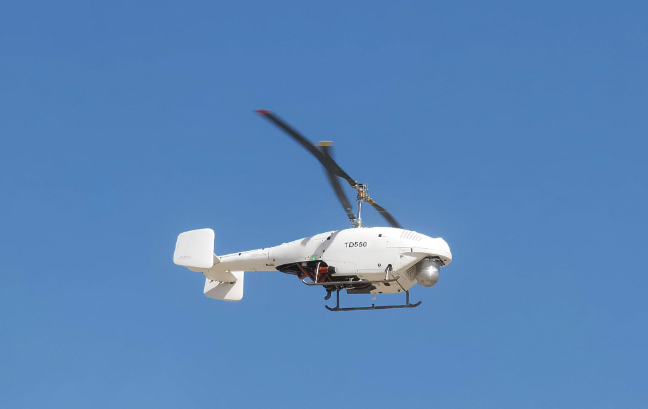
U.S. and Japan on Edge: Fujian Sparks Emergency Military Drills
Japan was first to react, releasing high-resolution Fujian photos via its Joint Staff Office—more a show of anxiety than surveillance.
The U.S. and Japan quickly launched the “Keen Dragon-25” joint drill, mobilizing nearly 20,000 troops in a record show of force.
Taiwan’s authorities, meanwhile, rushed to approve a multi-billion NT special defense budget, exposing their unease.
Reactions underscore Fujian’s impact: its 8+3 configuration surpassed expectations, pressuring even the U.S. military.
U.S. Defense officials issued mixed statements: “not seeking conflict” but still “protecting interests”—a reflection of their strategic dilemma.

With its electromagnetic catapult system and the KJ-600’s airborne early warning, Fujian’s strike group forms a powerful anti-access/area denial (A2/AD) capability, directly challenging U.S. Indo-Pacific strategy.
Fujian Redefines the Game in the Western Pacific
Fujian’s significance goes far beyond a single carrier—it represents a paradigm shift in China’s naval development.
Especially in carrier-based UAVs, China has gone from follower to leader. The U.S. is only now scrambling to revive its UAV programs, but the gap is already there.
As Fujian enters full carrier flight training—testing J-15T, J-35, and KJ-600 with catapults and arresting gear—it will form the backbone of China’s blue-water naval capability.
Together with Liaoning and Shandong, China’s three-carrier system will allow one to two carriers always operational, reshaping the naval balance in the Asia-Pacific and placing sustained pressure on the U.S. Seventh Fleet.
In the long term, Fujian embodies the future of naval warfare: manned-unmanned cooperative operations. Its breakthroughs will ripple across defense industries, from materials science to information technology, consolidating China’s military technology leadership.
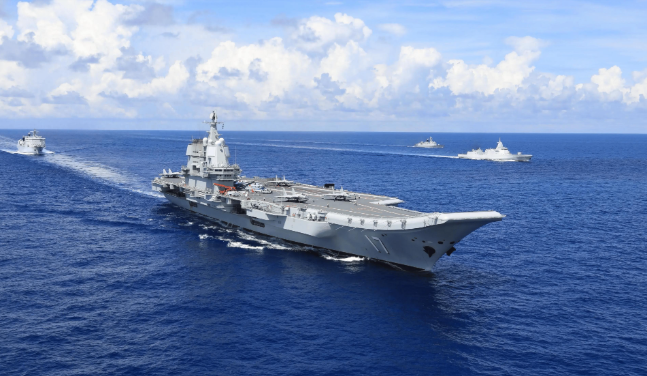
Conclusion
Fujian’s southward voyage is not just a test—it’s China’s technical declaration to the world.
With its 8+3 carrier-based aircraft system, Fujian not only challenges U.S. dominance but also rewrites the rules of the Western Pacific.
As China enters the three-carrier era, the strategic balance in Asia is shifting. Fujian is no longer about catching up—it’s about leading the next generation of naval warfare.
References
- Ministry of National Defense of Japan reports, Sept 2025
- Observers’ analysis of China’s Fujian aircraft carrier deployment

